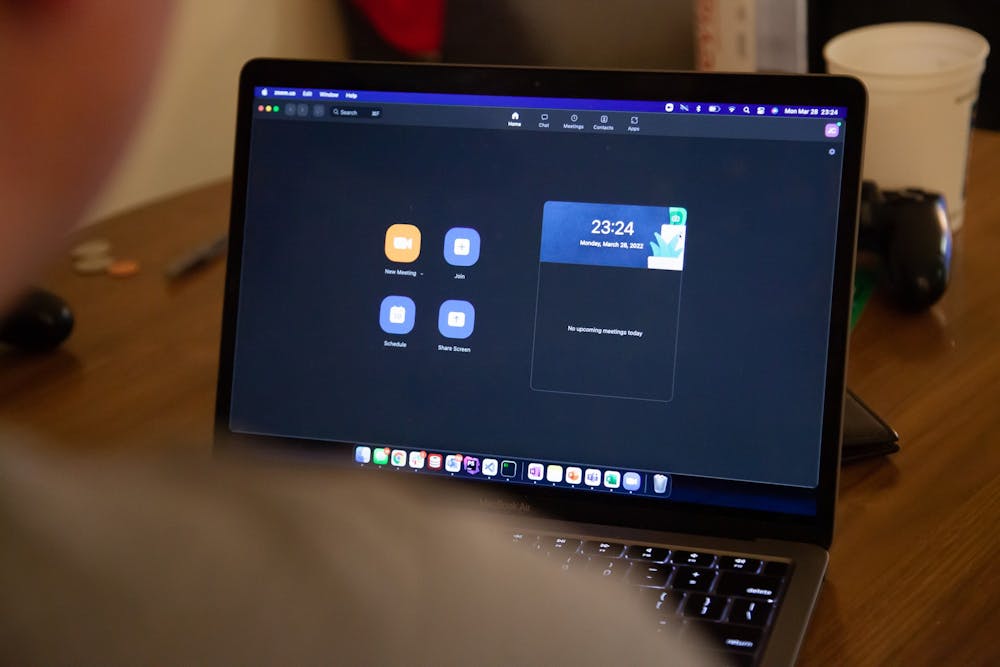USC graduates entering the workforce are reminded of COVID-19's lasting impact on the workplace, yet feel like USC has prepared them to excel in their future careers. Until USC fully adapts the flexibility of the post-pandemic workplace into the classroom, though, graduates are not as prepared for entering the workplace as they might think.
Because it has now been more than two years since the outbreak of COVID-19 in the United States, wearing masks, increased online communication and quarantining have become the new normal for USC students.
As a result of the elongated pandemic conditions, many workplaces have not transitioned back to in-person working because of the convenience of working from home and the need to take precautions, according to Forbes. Employers are now more flexible in the workplace and 83% of organizations plan to maintain this workplace flexibility post-pandemic, according to Mercer Company's principal Lauren Mason.
Despite these drastic changes in the workplace, USC students like fourth-year marketing and management student Gianna Modicamore said they feel the university has prepared them through their curriculum.
“I’ve taken a lot of classes in my field ... so I feel pretty prepared,” Modicamore said.
Similarly, fourth-year media arts and English student Rachel Warr said she feels ready to enter the workforce.
“I’m scared, like I'm just nervous. But from what I’ve gained from USC, I feel prepared,” Warr said.
With more employees working remotely, according to Forbes, being proficient with technology has never been more important in the workplace.
USC's transition back to in-person learning does not require students to use as much technology as online learning demands, but students still use technology in the classroom for completing certain assignments and for communication purposes.
“I had opportunities to use a lot of technology ... especially for projects in Media Arts," Warr said.
Modicamore also said technology has been an essential component of her learning experience at USC and that technology will continue to be useful in her post-pandemic career.
“For different classes, I’ve used a variety of online programs like Zoom, WebEx, Blackboard Collaborate ... These other online platforms that workplaces use, which I think will be more important even in the coming years and in our post-COVID world,” Modicamore said.
USC's Career Center has always offered students resources to prepare for their future careers by helping students with networking, resumes and preparing for interviews. Since COVID-19 has dramatically changed the workplace, the Career Center has altered its services to meet the new workforce demands of online networking.
In January 2022, the Career Center launched its new online platform, called UofSC Mentorship Hub, to provide the online connectivity that graduates need in this new COVID-19 era.
Mark Anthony is the Career Center’s senior associate director for student services. He said the Mentorship Hub provides students with online networking opportunities and the ability to form relationships with employers.
“This is a platform where we have invited alumni, employers, practitioners to be available to help students and to answer questions. So a student can come into Mentorship Hub, you can just post a general question out there to the whole group and get some responses, or you can look for targeted groups,” Anthony said.
With 95% of USC graduates being employed two years after graduation, according to Niche, USC has already been providing graduates with the skills they need to succeed in their future careers.
The increased use of technology in the classroom and in the Career Center is a step in the right direction, but this is not enough to maintain USC's high employment rate post-pandemic.
In order to maintain employment rates for graduates, USC must increase classroom flexibility to align with the workplace's flexibility post-pandemic.
COVID-19 has drastically changed workplace flexibility. 49% of employees said the transition to remote work has given them "more flexibility to choose when they put in their hours," according to a study conducted by Pew Research Center.
Modicamore said that USC professors could be “a little more flexible with what they expect of students, but also be more lenient in general. It’s a hard time for everyone."
Even though USC transitioning back to in-person learning was viewed as great news according to the USC website, in-person learning may not adequately prepare graduates for a career post-pandemic.
Today's workplace demands that employees possess even more tech-savvy skills post-pandemic and that workers can handle the permanent transition to remote working, which students can better prepare for with online learning according to Gallup studies. Online learning better reflected this new post pandemic workplace with the heavy usage of online platforms and insight on what remote learning would consist of on a day-to-day basis.
Online learning more accurately reflects the workplace today, with research predicting that 36.2 million Americans will work remotely by 2025.
Since many students do thrive with in-person learning, according to studies conducted by the American Economic Association, transitioning completely back to COVID-19 Era's 100% online-learning platform is not the answer. USC must recognize, though, that many students benefitted from the self-paced nature, convenience and fewer distractions of online learning according to Edutopia. USC should offer more online classes for students to replicate workplaces' flexibility and for students who thrive with the flexibility of the online learning model.
For USC to accurately reflect the increased flexibility in workplaces, the university should consider more flexible deadlines in the classroom, an increase in the number of online classes offered to students and implementing more online platforms in the classroom used by workplaces.
USC cannot simply return to the way of learning during pre-COVID-19, instead, USC must further adapt its services in the wake of the pandemic to prepare students for employers' new expectations.

